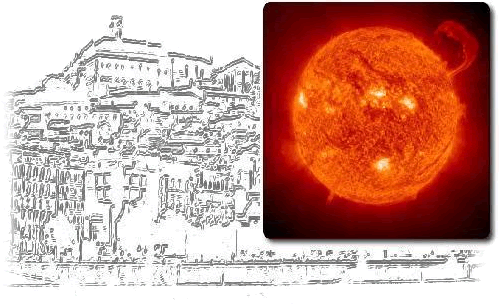|
Coronal mass ejections (CMEs) are the most energetic events associated
with the eruption of plasma and magnetic field from the Sun and they drive solar
wind disturbances, accelerate particles to high energies, and contribute to space
weather phenomena affecting the near-Earth environment, e.g., severe geo-magnetic
storms. In understanding the range of space weather effects of a CME, the knowledge
of the radial evolution of the CME is important for the determining of its arrival
at the near-Earth space and for inferring of its interaction with the
disturbed/ambient solar wind in the course of its travel to 1 AU and further. The
interplanetary scintillation (IPS) technique provides an essential tool to track
CMEs and their associated disturbances in the Sun-Earth distance, and it has
demonstrated the ability to make correct association between CMEs and their effects
at the Earth's environment. The IPS measurements at 327 MHz obtained from the
Ooty Radio Telescope (operated by the National Centre for Radio Astrophysics, Tata Institute of
Fundamental Research, India) are capable of providing estimates of solar wind speed
and density turbulence along directions of a large number of radio sources (~1000
sources per day) in the heliospheric distance range of 20 - 250 solar radii. This
talk will review results on the radial evolution of CMEs based on the large IPS
database collected from the Ooty Radio Telescope. Additionally, the solar wind
estimates along different cuts of the heliosphere allow the reconstruction of
three-dimensional structures of propagating transients in the inner heliosphere.
The results on three-dimensional evolution of size and speed of solar wind
transients (e.g., propagating CMEs as well as co-rotating interaction regions
(CIRs)), are reviewed and discussed on the possibility of forming a basic model to
forecast the arrival/impact of solar and solar wind generated space weather effects
at the Earth or else where. |



